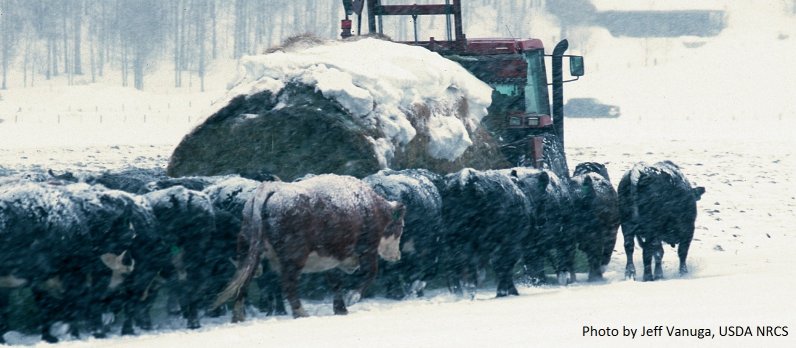
By Jay Parsons, UNL Biosystems Economist and Jim Jansen, Nebraska Extension Educator
As a follow up to the February BeefWatch article titled “The Livestock Indemnity Program and the Importance of Recordkeeping,” the present article will outline some of the details necessary in documenting eligible losses and the records involved. The Farm Service Agency (FSA) provides information about acceptable documentation in the Livestock Death Loss Documentation section of their Livestock Indemnity Program (LIP) Factsheet, but it is worth expanding on that information with additional explanation given that the relaxed documentation requirements utilized for livestock deaths occurring from October 1, 2011 through December 31, 2014 have run their course and producers should now expect a stricter interpretation of the documentation rules.
First of all, documentation of death losses themselves should be a given. Whether it is the result of a severe weather event or an eligible wild animal attack, producers must document the number and kind of livestock that died. Preferably, this is supplemented with a video record or dated photo(s). It is important producers understand that the other key piece in this equation is good inventory records.
The logical question to ask a producer submitting an LIP notice of loss and application for payment to an FSA office is, “How can you verify what you are trying to tell us?” LIP provides compensation to eligible livestock producers who suffer livestock death losses in excess of normal mortality due to an eligible event. Documenting the losses themselves is only half of the mortality loss percentage equation. Producers need accurate counts of the number and type of livestock in their inventory before and after the eligible event. Beginning and ending year inventory are a minimum to get you started and should be supplemented with production records (births, death losses, weaning numbers, etc.), purchase records, sale records, veterinarian records, inventory related bank loan documentation, records assembled for tax filing, and other reliable documents that can help verify livestock inventories at different points throughout the year.
LIP payments are calculated based on eligible death losses in excess of normal annual mortality. Normal mortality rates are established by FSA on a State-by-State basis using recommendations from State livestock and Extension Service organizations. Table 1 (http://go.unl.edu/6jsv) contains the normal mortality rates established for beef cattle in Nebraska.
Suppose a producer with a fall calving cow herd has 300 weaned calves weighing 480 to 560 pounds that are put out on grass in early April. A wet, spring blizzard follows and results in 10 dead calves. The normal mortality calculation results in a death loss threshold of 6 head (300 x 2%). This means 4 head (10 – 6 = 4) are eligible for LIP payment if the producer files the proper paperwork in a timely manner with his/her FSA office and the local FSA County Committee determines the loss occurred due to an eligible weather event. The producer must file a notice of loss on form CCC-852 with his/her local FSA office within 30 calendar days of when the death losses became apparent. The producer can then file an application for payment on form CCC-852 to request compensation for the 4 head they lost in excess of the normal mortality rate. This should be filed within 30 calendar days of when the loss became apparent; however, it must be completed no later than 30 calendar days after the end of the calendar year in which the loss occurred (i.e. January 30 of the following year).
The producer should continue to accurately document inventory counts and death losses throughout the year. Because once the annual death loss threshold (normal mortality) has been exceeded, subsequent death losses due to normal mortality or due to eligible events in the same calendar year may trigger additional losses eligible for LIP payments. Multiple notices of losses and multiple applications for payment may be filed by producers that suffer multiple livestock losses during the same calendar year.
As of January 6, 2015, over $76.7 million had been paid out nationwide to cover 2011-2014 documented losses under the LIP. Nebraska producers had received over $6.6 million as of that date with over $5 million attributed to 2013 losses and over $1 million attributed to 2014 losses. Future LIP payments have yet to be determined but producers want to make sure that if they are adversely affected by an eligible event they have the proper records in place to be compensated for it.
The Livestock Indemnity Program (LIP) Factsheet is available from FSA at http://www.fsa.usda.gov/Internet/FSA_File/lip_long_fact_sht_2014.pdf.
Jay Parsons
Biosystems Economist
Department of Agricultural Economics
University of Nebraska–Lincoln
jparsons4@unl.edu
Jim Jansen
Extension Educator
Cedar and Knox County Extension
University of Nebraska–Lincoln
jjansen4@unl.edu